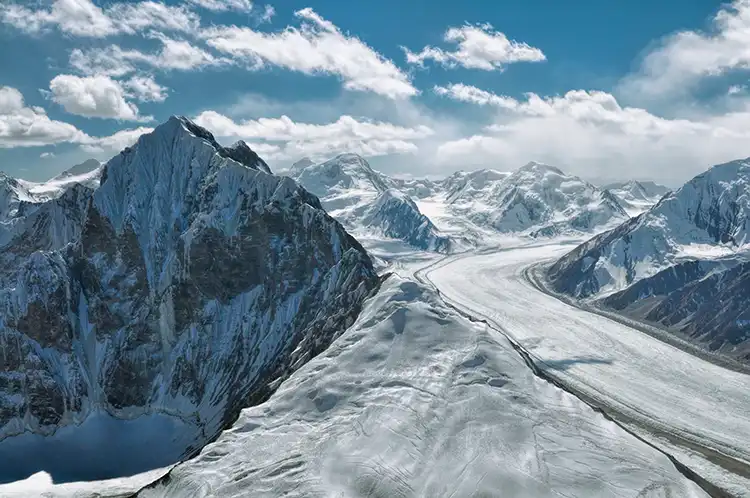
Glacial retreat over the next 100 years will leave large amounts of empty space behind. One group of scientists has analysed ways these new landscapes could be used
By
Nobody knows for sure exactly how many glaciers there are in the world, but the 215,000 identified by the Randolph Glacier Inventory encompasses all but the very smallest. Of these, the vast majority will experience substantial retreat over the next few decades as the global heating crisis heightens.
As scientists all over the world grapple with the repercussions of this mass-melt, one team of glaciologists from ETH Zurich and WSL Birmensdorf is taking a different approach. By analysing the spaces left behind when the ice is gone, the team theorises that these new landscapes could provide significant hydropower potential from the resultant melted glacier water. This could boost global renewable energy potential, but also prove an important way to replace the functions currently provided by glaciers, vast reservoirs that feed water into large river systems and balance seasonal discharges.
In the study, the researchers used the Randolph Glacier Inventory to identify every glacier in the world with an area of more than 50,000m2 located outside the Subantarctic (a total of 185,000). They then placed virtual dams at the current terminus of each one. This exercise identified a maximum theoretical storage potential of 875 cubic km, and a maximum theoretical hydropower potential of 1,350 terawatt hours per year – about one-third of current hydropower production worldwide.
Enjoying this article? Check out our related reads:
Not all of this space would actually be suitable for hydropower-use however. Lead author of the study, Professor Daniel Farinotti, explains that the team also conducted a suitability assessment for each site, focused on environmental, technological and economic factors. This identified 40 per cent of the theoretical maximum as ‘potentially’ suitable. Sites within protected areas, or in regions with large numbers of endangered animals were rejected. The resulting space was equal to hydropower potential of around 13 percent of the current levels of production worldwide. This was largest in the high mountains of Asia – in particular, the calculated potential in Tajikistan could account for up to 80 per cent of current electricity consumption in that country.
Yet, despite identifying this opportunity, the scientists involved are keen to point out that they are not necessarily advocating for a man-made, dam-based approach. ‘The landscapes that will form after glaciers retreat will be some of the very few pristine landscapes that we will have on our planet,’ says Farinotti. ‘These new territories have intrinsic value even if they were not to produce hydropower. It’s not a scientific answer that can be given, it’s a question about values, one that society should be deciding.




